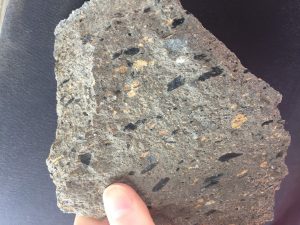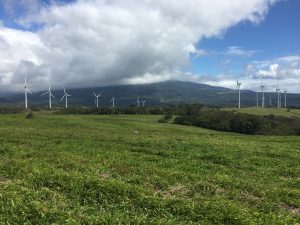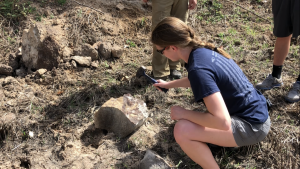Day 12, Thursday, 1/18/18
by Kathryn Van Artsdalen (‘19.5) and Gabby Baeulieu (’20)
Thursday January 18th was busy for GEOL 1035, serving as both a field and travel day. We left Yökö Termales – our scenic and windy home for the previous two days at the foot of Volcán Miravalles – and made our way northwest.
Guillermo Alvederez, a preeminent Costa Rican volcanologist, served as our guide for the day, leading us to seven sites of volcanic deposits and products, representing parts of Costa Rica’s Liberia and Begaces formations. Along the way, we learned about fiammé, a black, glassy lens found in highly welded ignimbrites. We also braved barbed wire to check out an unconsolidated pumice theorized to be the result of a pyroclastic density current. Another highlight was observing rhyolite deposits from the Rincón de la Vieja volcano that erupted about 1-1.6 million years ago and then cooled to form a hummocky landscape of small hills at the volcano’s base.
At one of the last stops of the day, we got up close and personal with one of Costa Rica’s renewable energy sources: wind. We visited a scenic array of wind turbines nestled in the valley between two volcanoes, Rincón de la Vieja and Cacao. Wind energy is an emerging power source for Costa Rica, which is striving for complete carbon neutrality. Currently, hydroelectric plants and geothermal fields provide 82% and 12% of the country’s energy, respectively.
In the evening we arrived at Parque Nacional Santa Rosa, only 25 miles south of the Nicaraguan border!! We are staying in the park’s bunkhouses, and will be doing field mapping in the area over the next week. Ciao!

A 2.1 million year old, welded ignimbrite with fiammé (the glassy, black shards).

A series of wind turbines at the base of Rincón de la Vieja. It was super windy!

Kristin Kimble (’19) hammers a rock from the Montenegro Formation (approximately 2.85 million years old).
